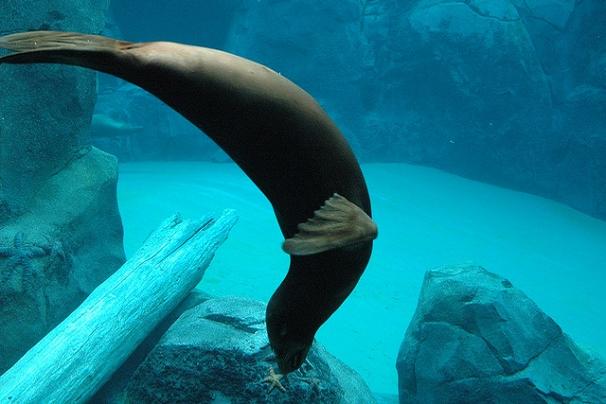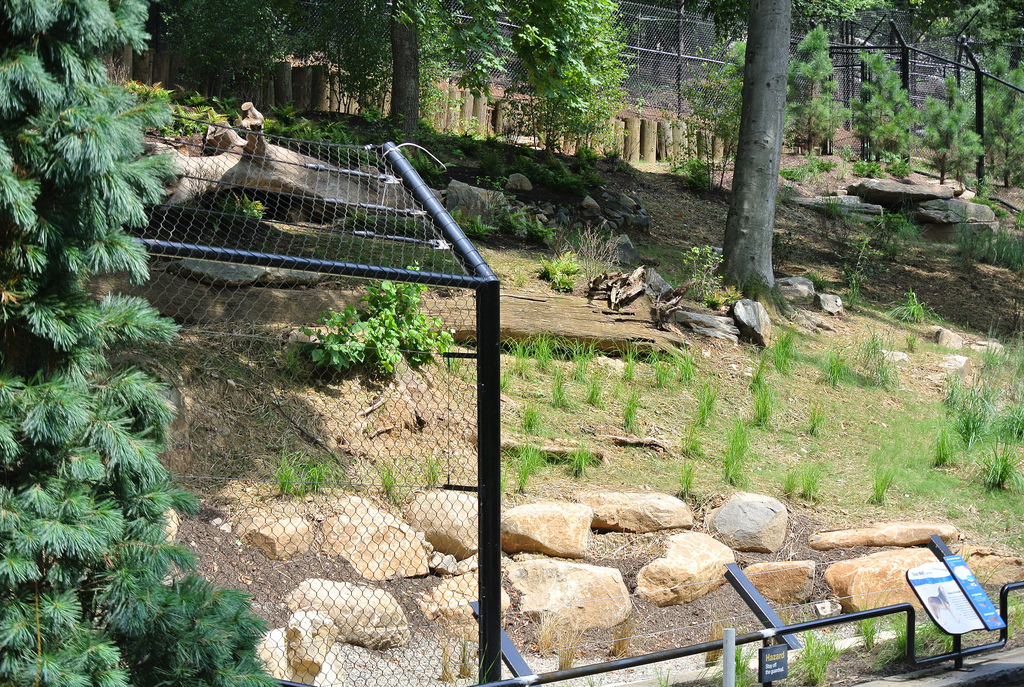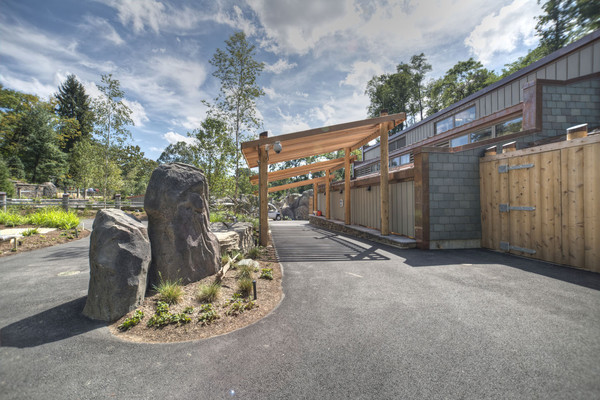 Appropriately opening on the all-American holiday, Labor Day 2012, National Zoo's newest exhibit, American Trail, features sea lions in completely new digs along with a host other familiar faces in revamped homes. The $42 million project replaced the existing and quite tired North America region, where sea lions swam in an unnatural-looking bright blue pool. The exhibit focuses on species with successful conservation stories, such as the Bald Eagle and the Grey Wolf.
Appropriately opening on the all-American holiday, Labor Day 2012, National Zoo's newest exhibit, American Trail, features sea lions in completely new digs along with a host other familiar faces in revamped homes. The $42 million project replaced the existing and quite tired North America region, where sea lions swam in an unnatural-looking bright blue pool. The exhibit focuses on species with successful conservation stories, such as the Bald Eagle and the Grey Wolf.
The undeniable stars of the new exhibit are the pinnipeds--a mixed group of seals and sea lions sharing their habitat with brown pelicans. Their exhibit mimics the California coast, and inspired the architecture and materials choices throughout American Trails. The exhibit features two separate pools, 300,000 and 150,000 gallons respectively, feature a wave machine, and are designed to eventually be switched from fresh water to salt. Built into the exhibit are three viewing areas--under-water, over-water and split--as well as a small amphitheater for keeper demonstrations on exhibit. The exhibit currently houses four sea lions and one grey seal, but the Zoo expects to receive another 3 seals soon.
fresh water to salt. Built into the exhibit are three viewing areas--under-water, over-water and split--as well as a small amphitheater for keeper demonstrations on exhibit. The exhibit currently houses four sea lions and one grey seal, but the Zoo expects to receive another 3 seals soon.
Additionally, the beavers improved exhibit includes a new den that they built themselves--replacing a fully artificial one in their previous enclosure. The old wolf enclosure has been spruced up with new plantings and dead fall, and viewing has been improved.
 American Trail also includes an interactive tide pool for splashing about, and a thematically appropriate dining facility featuring locally sourced and renewable seafood and vegetarian options (managed by Sodexo).
American Trail also includes an interactive tide pool for splashing about, and a thematically appropriate dining facility featuring locally sourced and renewable seafood and vegetarian options (managed by Sodexo).
 Finally, the National Zoo is a leader in instituting green practices into their new exhibits, and American Trail is no exception. Great care was especially given to the landscape of the exhibit. All flora is native, and the design was sensitive to the preservation of the naturally occurring forested areas of the Zoo.
Finally, the National Zoo is a leader in instituting green practices into their new exhibits, and American Trail is no exception. Great care was especially given to the landscape of the exhibit. All flora is native, and the design was sensitive to the preservation of the naturally occurring forested areas of the Zoo.
 From the Zoo website:
From the Zoo website:
"Green practices incorporated into American Trail include:
- American Trail reused an existing site (formerly Beaver Valley) with lower-impact construction methods, including retaining walls that reduced the disturbance of soils, vegetation, and tree roots and minimize the impact on upslope trees. Next to the retaining walls are small rain-gardens that help manage storm water drainage
- All of the water in the seal and sea lion exhibit is recycled originating from the District of Columbia’s water system. Tap water, however, does not meet the stringent standards for aquatic animal care. A new state-of-the-art filtration system scrubs the water and removes any chemical treatments. The pH balance is adjusted for the animals and filtered a final time using ozone filtration.
- Aquatic life support systems and equipment have been replaced to provide better control of water chemistry and quality.
- Thanks to careful design of the pools and expanded backwash systems, this exhibit uses less than half the amount of water similar pools (designed with standard techniques) would use.
- An ozone disinfectant system will reduce our dependence on chlorine for disinfecting the pool water.
- Low emitting materials, certified wood, materials with recycled content, and regional materials were used to align with Leadership in Energy and Environmental Design (LEED) standards.
- Full cut-off light fixtures will limit light pollution.
- Shading of the pools will keep the water form absorbing so much heat from the sun.
- Heating, ventilation, and cooling of people and animal spaces is controlled individually in each space, to reduce energy use when those spaces are not being used."
 This exhibit was designed by Portico Group from Seattle, WA and architects Quinn Evans from Washington, DC, and constructed by Forrester Construction, from Rockville, MD. Congratulations to all involved!
This exhibit was designed by Portico Group from Seattle, WA and architects Quinn Evans from Washington, DC, and constructed by Forrester Construction, from Rockville, MD. Congratulations to all involved!
The Smithsonian National Zoo has a great Flickr stream of the new exhibit here.

























